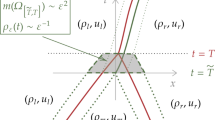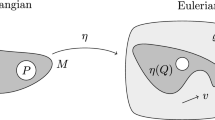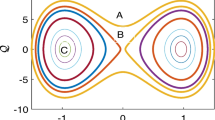Abstract
We describe in detail the qualitative behavior of solutions of the planar isosceles problem which come close to triple collision. Using a method of McGehee, one may describe a neighborhood of triple collision for any mass ratios. For sufficiently small mass ratios, we exhibit infinitely many distinct periodic and collision/ejection solutions of this problem.
Similar content being viewed by others
References
Devaney, R.: 1980,Inventiones Math. 60, 249.
Lacomba, E. and Losco, L.: 1980,Bull. Am. Math. Soc. 3, 710.
McGehee, R.: 1974,Inventiones Math. 27, 191.
Moeckel, R.: 1981, to appear.
Pollard, H.: 1976,Mathematical Introduction to Celestial Mechanics, Math. Assoc. Amer.
Simo, C.: 1981,Classical Mechanics and Dynamical Systems, Marcel Dekker, Inc., New York (to appear).
Sundman, K.: 1912,Acta Math. 36, 105.
Wintner, A.: 1941,The Analytical Foundations of Celestial Mechanics, Princeton University Press, Princeton, N.J.
Author information
Authors and Affiliations
Additional information
Partially supported by N.S.F. Grant MCS 81-01855.
Rights and permissions
About this article
Cite this article
Devaney, R.L. Motion near total collapse in the planar isosceles three-body problem. Celestial Mechanics 28, 25–36 (1982). https://doi.org/10.1007/BF01230657
Issue Date:
DOI: https://doi.org/10.1007/BF01230657




